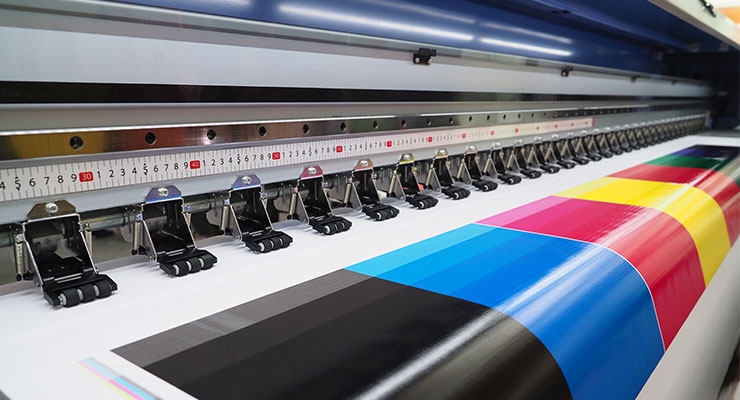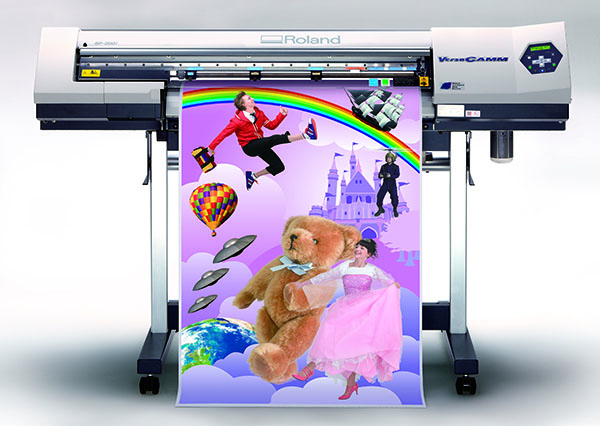Digital Printing Fundamentals Explained
Digital Printing Fundamentals Explained
Blog Article
The Greatest Guide To Digital Printing
Table of ContentsFascination About Digital PrintingFascination About Digital PrintingWhat Does Digital Printing Mean?The 6-Second Trick For Digital PrintingDigital Printing Things To Know Before You BuyThe Best Strategy To Use For Digital PrintingThe Greatest Guide To Digital PrintingThe smart Trick of Digital Printing That Nobody is Discussing
Personalization likewise permits services to stand out in a crowded market by producing one-of-a-kind marketing products that differentiate them from their rivals. Among the main advantages of electronic printing is the ability to print variable data. Each printed piece can be special, enabling services to create customized advertising and marketing materials that talk directly to their target audience.Digital printing likewise allows for customization in the style of advertising materials (Digital Printing). With electronic printing, businesses can create layouts that are special and tailored to their specific requirements.
The Best Guide To Digital Printing
This advantages businesses that want to check various marketing methods or introduce brand-new products and services. By printing smaller amounts of advertising and marketing materials, businesses can reduce waste and prevent the requirement for excess supply. Digital printing is additionally functional. It can publish on numerous products, consisting of paper, cardstock, vinyl, and steel.
By utilizing various products and formats, services can create one-of-a-kind advertising products that attract attention from their competitors and bring in attention from their target audience. Digital printing likewise supplies consistency. With conventional printing methods, there is usually variation in between prints because of differences in ink coverage, pressure, and various other elements.
This consistency can help develop consumer trust fund and reliability, revealing that business is devoted to giving high-quality materials. Consistency is particularly crucial for services that want to develop client trust fund and reliability. By making sure that every print corresponds, services can show that they are devoted to offering top notch materials and paying focus to the details.
Not known Details About Digital Printing

Furthermore, digital printing creates less waste since it can print on demand and in smaller sized quantities, reducing the requirement for excess supply and materials. Digital printing additionally uses much less energy contrasted to traditional printing approaches. Digital printers do not need as much energy to operate, as they do not require to warm up as much or make use of as much power to run.
Getting The Digital Printing To Work

Countered printing calls for a plate for each color published. Conventional balanced out printing is a print method that uses aluminum plates to transfer ink onto a rubber sheet (often referred to as a "covering").
The Facts About Digital Printing Revealed
Balanced out printing allows for a large range of print products to be used throughout production. The high-grade pictures produced with balanced out printing make it the recommended method, specifically amongst graphic developers, when looking for the best shade reproduction, information, and professional-looking prints.
For digital inkjet printing, ink is moved directly onto the surface area. Instead than relying on light weight aluminum plates and rubber blankets to move a picture, electronic printing uses liquid ink during manufacturing.
What Does Digital Printing Mean?
Since offset printing can blend custom-made color inks for each job, it will normally obtain the shades spot-on. Count on offset printing for clean, distinctive types and pictures without touches or spots.
It costs a whole lot to start an offset work. You need to invest money into developing the plates, which requires time. However, once you've spent it, all of the materials are all set to go, and you'll invest less on huge balanced out jobs than an electronic print, which is concerning the very same per item no issue how big the work gets.
Each print is the same. You risk fewer strange variants created by imbalances in water and ink. Digital printing is much less pricey for low-volume tasks. The rate per device goes down for electronic printing, so at some time, they crisscross. Changing info within a single print work. As an example, state you were publishing out postcards marketing a show.
Digital Printing - The Facts
While electronic printing or inkjet printing is the favored choice you could try these out in today times, there are engaging reasons to convert from offset to digital click to read more printing systems. Get In Touch With Kao Collins concerning color matching and personalized formulations. When printing offset or digitally, essential choices and procedures are associated with color matching. If it has a visuals overlay or consists of a label, it will certainly have shades.
Whichever the instance, the shade will need to be matched. Shade matching of electronic printer ink is no more challenging with dyes and pigments. Industrial inkjet printing uses adaptability for printing on several substratums. Digital printing is perfect for clients that do not call for longer runs and warehousing materials.

One benefit of digital printing is picking from a large range of digital substrates. With balanced out printing, substratums comprise, typically, 30% of the expense of the job. With digital printing, the price of the substrate in the overall work is tiny. This enables for even more choices than in the More about the author past, which benefits marketing professionals and organizations.
The Main Principles Of Digital Printing
drop-on-demand is the 2nd printing modern technology to think about. Constant inkjet systems call for substantial upkeep, more operator training, and higher downtime. Tools costs in inkjet printing are far lower than balanced out printing as there are no plate-making, plates, and press expenditures. Past the funding expense, the prepress tools and printing machine require very skilled drivers in balanced out printing, which includes labor expenses.
Report this page